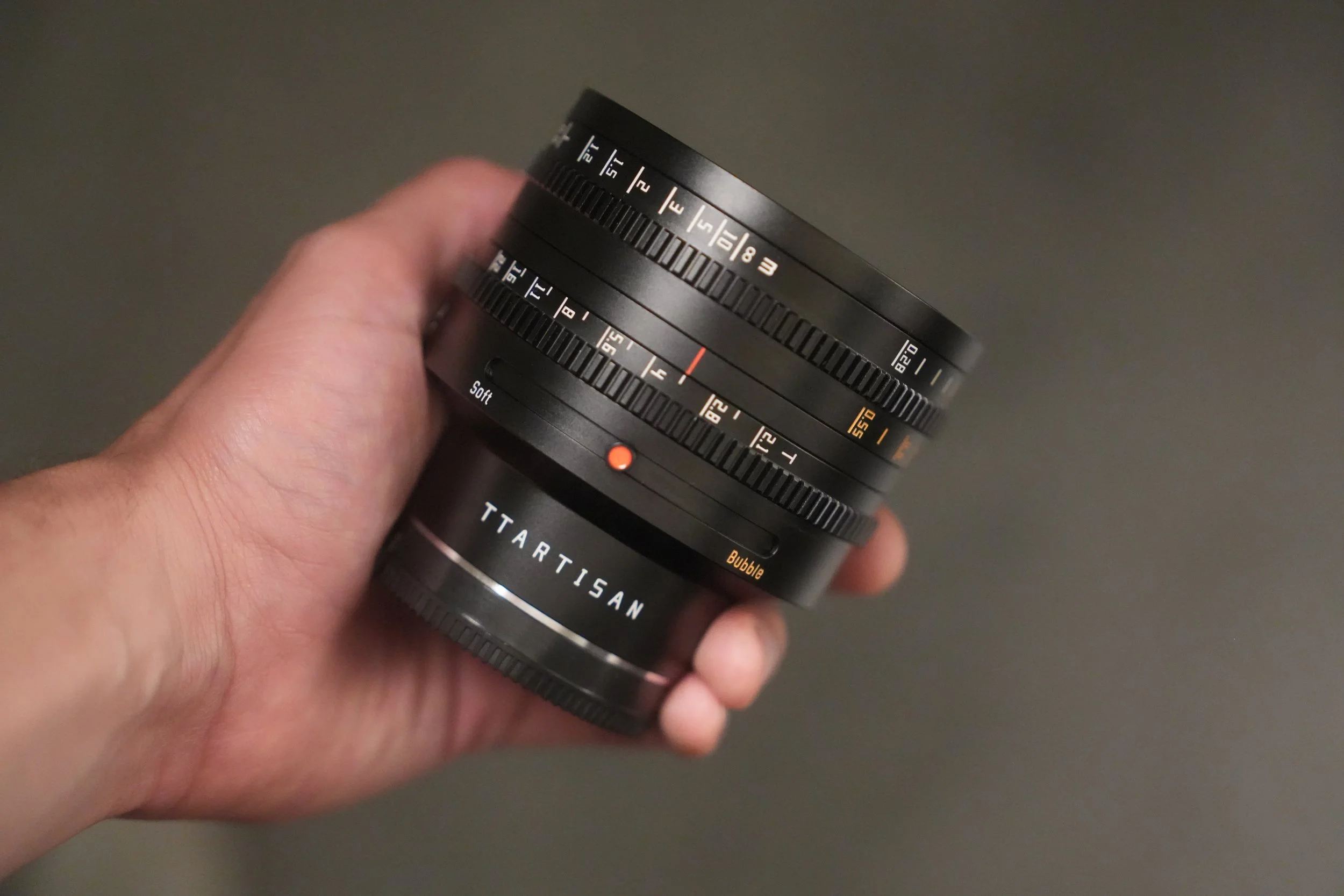TTArtisan 35mm T2.1 Cine Lens Review: A Photographer’s Honest Take
If you're a regular here, you might be wondering: Why is a photographer reviewing a cine lens? Fair question.
There are a few reasons I decided to test the TTArtisan 35mm T2.1 Cine Lens. First, I have a great working relationship with TTArtisan—they’ve sent me some genuinely fun and characterful lenses over the years. Second, beyond photography, I also make money through filmmaking projects outside of YouTube. Lately, I’ve been doing more of that work, so I was genuinely curious to try a cine lens more seriously. And finally, this particular lens has a unique feature that piqued my interest: a dual bokeh control slider—more on that in a bit.
First, The Specs
Here’s a breakdown of the TTArtisan 35mm T2.1 Cine Lens:
Mounts Available: Sony E, Canon RF, Fujifilm X, Nikon Z, L-Mount
Aperture Range: T2.1 to T16 (manual only)
Optics: 9 elements in 6 groups
Minimum Focus Distance: 0.7 meters
Filter Thread: 67mm
Build: Full metal body with geared rings for focus and aperture
Weight: Approx. 700g
Price: ~£310 GBP / $370 USD
This is a manual-only cine lens, meaning there’s no autofocus and no electronic aperture control. It’s all manual—pure metal and glass.
First Impressions
Visually, this lens is stunning. The all-metal construction feels premium, and on my Sony A7 IV, it looks like a serious piece of gear. The focus and aperture rings are smooth and well-damped, and the build quality is excellent.
But let’s be honest: we don’t buy lenses for how they look. We buy them for the image they create.
What I Liked
1. Aesthetics & Build
As I mentioned, this thing looks and feels premium. It feels like a proper cine lens, which it is. On a rig or tripod, it certainly wouldn’t look out of place.
2. Image Character
There is some character here. Like many TTArtisan lenses, this one doesn't aim to be clinically sharp or perfect. There’s a softness wide open at T2.1 that’s actually quite pleasing for certain types of shots. That “vintage meets modern” vibe can be creatively useful if that’s what you’re after.
3. Dual Bokeh Control
The headline feature is the dual bokeh slider, which lets you adjust the background rendering from “Soft” to “Bubble.” You can also stop anywhere in between. It’s subtle, but fun to experiment with—especially if you shoot a lot of shallow depth-of-field scenes and want to tailor the background to your aesthetic.
What I Didn’t Like
1. No Image Stabilisation
This lens doesn’t have IS, and combined with its weight (700g), it’s not the easiest lens to use handheld—especially if you’re shooting run-and-gun. Compared to lenses like Sony’s 24–70mm GM II or Fujifilm’s 16–55mm f/2.8, which I’m more accustomed to, this felt like a real step back in usability.
2. Manual Focus for Video
For me, it was a challenge. I often shoot solo and on the move, and without autofocus or focus peaking (if you don’t set it up right), it’s very easy to miss focus. Some of my test shots came out soft—disappointing after a long day filming.
3. Limited Practical Use (For Me)
Ultimately, the biggest issue wasn’t the lens itself—it’s that this lens just doesn’t suit my workflow. As someone who toggles between stills and video, I need hybrid tools that are versatile, fast, and easy to use. The TTArtisan 35mm T2.1 is much more at home on a rig, controlled setup, or narrative shoot—not out in the wild with a camera slung over your shoulder.
Who Is This Lens For?
If you’re just starting out in cinematography and want a manual cine lens to build your rig around, the TTArtisan 35mm T2.1 could be a solid, budget-friendly option. It has character, it’s well-built, and the bokeh slider gives you an interesting creative tool.
But if you're a hybrid shooter like me—jumping between photography and filmmaking, relying on autofocus, and needing to stay lightweight—this lens might not be a good fit.
Final Thoughts
I really wanted to love this lens. I was hoping it would inspire me and get me excited to shoot video in a new way. But in truth, it did the opposite—it slowed me down, made me miss shots, and didn’t quite provide a “wow” factor that made the effort worth it.
It’s beautiful, yes—but we don’t buy lenses for the shelf. We buy them to use. And in my case, this one won’t be seeing much more use.
That said, I always want to be honest with you. This isn’t a bad lens—it’s just not for me.
*This post contains affiliate links and I will be compensated if you make a purchase after clicking through my links.
As an Amazon Associate I earn from qualifying purchases
